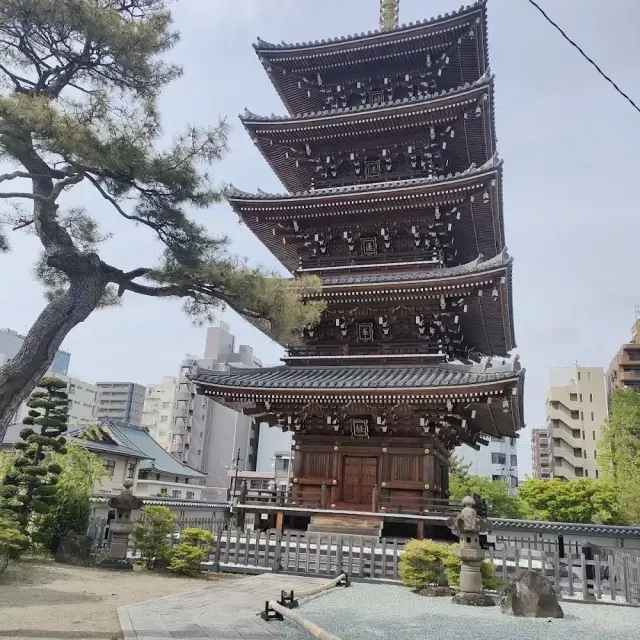https://www.dekitabi.com/itinerary/sendai-city-essential-temple-tour
If you’re planning a journey to Japan and want to dive deep into its rich cultural and historical tapestry, Sendai offers a treasure trove of sites that showcase its storied past. From ancient temples to historical ruins, each location tells a unique story of the region’s heritage. Here’s an in-depth guide to some of Sendai’s must-visit landmarks: Tsutsujigaoka Tenmangu, Koshoji Temple, Soto Zen Gohozan Shionji Temple, Zuihoden, Sendai Castle Ruins, Osaki Hachiman Shrine, and the Shingon sect Omuro school special head temple, Ryuhoji.
Tsutsujigaoka Tenmangu: A Shrine of Learning and Legacy

https://www.dekitabi.com/attraction/tsutsujigaoka-tenmangu
Tsutsujigaoka Tenmangu, nestled in the heart of Sendai, is a shrine dedicated to Tenjin, the Shinto deity of learning. Originally established to honor Sugawara no Michizane, a scholar and politician, this shrine is a hub for students and scholars seeking divine assistance in their academic pursuits. The shrine is renowned for its seasonal beauty, particularly during the azalea bloom in spring, which draws visitors from all over. The lush greenery and serene environment make it a peaceful spot for reflection and prayer.
Koshoji Temple: A Beacon of Buddhist Tradition

https://www.dekitabi.com/attraction/koshoji-temple-sendai
Just a short distance from Tsutsujigaoka Tenmangu, Koshoji Temple is an essential stop for those interested in Buddhist architecture and traditions. This temple, established in the early Edo period, reflects the classic Zen aesthetics with its minimalist design and tranquil gardens. Koshoji is particularly noted for its impressive wooden main hall and well-preserved statues of Buddha, which offer a glimpse into Japan’s rich Buddhist heritage. Visitors often come here to experience the calm atmosphere and participate in meditation sessions.
Soto Zen Gohozan Shionji Temple: A Testament to Soto Zen Buddhism

https://www.dekitabi.com/attraction/shoon-ji-temple
For those intrigued by Zen Buddhism, Soto Zen Gohozan Shionji Temple is a must-visit. This temple, situated on Gohozan Mountain, is a significant site in the Soto Zen tradition, one of Japan’s main Zen sects. The temple complex is renowned for its serene gardens, traditional Zen architecture, and the profound sense of tranquility that envelops the area. Shionji Temple is a perfect place for visitors to learn about Soto Zen practices and immerse themselves in the meditative atmosphere that characterizes this sect.
Zuihoden: The Mausoleum of Date Masamune

https://www.dekitabi.com/attraction/zuihoden-sendai
Zuihoden, the mausoleum of the powerful Date Masamune, is a highlight of Sendai’s historical landscape. Date Masamune was a renowned feudal lord who played a crucial role in the unification of Japan during the late 16th and early 17th centuries. Zuihoden is a beautifully crafted site with intricate carvings and lavish decorations, reflecting the wealth and influence of its patron. The mausoleum is set amidst a lush forest, adding to its serene and reverent ambiance. Visitors can explore the ornate structures and learn about the life and legacy of Date Masamune.
Sendai Castle Ruins: Echoes of a Samurai Stronghold

https://www.dekitabi.com/attraction/sendai-castle
Sendai Castle Ruins, also known as Aoba Castle, offer a glimpse into the past grandeur of Sendai’s samurai era. Originally built in the early 17th century by Date Masamune, the castle served as a strategic military stronghold. Today, the ruins provide panoramic views of the city and are a popular spot for historical enthusiasts. The site includes remnants of the castle’s walls and foundations, as well as informative plaques that provide context about the castle’s history and its role in the region. Exploring the ruins is an engaging way to connect with Sendai’s samurai heritage.
Osaki Hachiman Shrine: A Shrine of Tradition and Festivals

https://www.dekitabi.com/attraction/osaki-hachimangu-shrine
Osaki Hachiman Shrine is another significant site in Sendai, dedicated to Hachiman, the Shinto deity of war and agriculture. Established in the early 17th century, this shrine is known for its elegant architecture and vibrant festivals. The shrine’s main hall, with its distinctive red pillars and ornate decorations, stands as a testament to traditional Japanese craftsmanship. Osaki Hachiman Shrine is also famous for its annual festivals, which attract visitors with traditional performances, processions, and cultural events. The shrine offers a lively atmosphere and a chance to experience local traditions firsthand.
Ryuhoji: A Sanctuary of the Shingon Sect

https://www.dekitabi.com/attraction/ryuhoji-temple-sendai
Ryuhoji, the special head temple of the Omuro school of Shingon Buddhism, is a profound spiritual site for those interested in esoteric Buddhist practices. The Omuro school, part of the Shingon sect, is known for its unique rituals and teachings that focus on the mystical aspects of Buddhism. Ryuhoji is a serene temple complex with distinctive architectural features and sacred spaces dedicated to meditation and worship. Visitors can explore the temple grounds, participate in ceremonies, and gain insights into the Shingon sect’s esoteric practices.
Conclusion: Embracing Sendai’s Historical and Cultural Riches
Sendai’s historical and cultural sites offer a rich tapestry of experiences that highlight the city’s diverse heritage. From the scholarly serenity of Tsutsujigaoka Tenmangu to the spiritual depth of Ryuhoji, each location provides a unique perspective on Japan’s past and present. Whether you’re interested in Buddhist traditions, samurai history, or Shinto practices, Sendai’s landmarks offer something for everyone to discover and appreciate. As you explore these sites, you’ll gain a deeper understanding of Japan’s rich cultural landscape and the legacy of its historical figures.


Leave a Reply